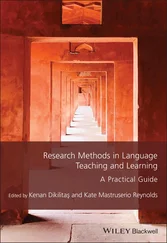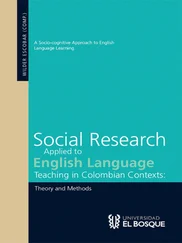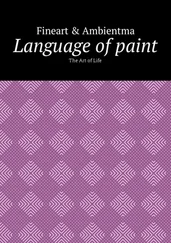He sees in the co-operative nature of this process a fundamental transformation of traditional doctor-patient roles:
Of course if, as a doctor, I involve myself in the patient’s experience of events, I am no longer the “expert” in charge of the consultation. My patient is regarded as an equal expert. The challenge in both clowning and doctoring is to listen and respond with no script or clear guide to follow and to trust that an outcome favourable to all participants will emerge.227
There are clearly emotional and behavioural dimensions here which are relevant to other social professions. Many of the qualities of empathy, listening, acceptance and risk that are referred to here also appear in the responses of language teachers.
In his workshops with psychotherapists there are the clearest professional parallels drawn to the ‘double nature’ of the clown who is fully engaged in the story, yet also has a certain distance to it. Rob Leiper, a clinical psychologist and Honorary Senior Research Fellow at Kent Institute of Medicine and Sciences has attended Gladwell’s workshops as part of the Serious Clowning programme at the Blackthorn Trust. He writes,
Something you learn as a psychotherapist or counsellor and which is crucial to being a good practitioner is to both be in and be out at the same time, so you are in touch with the person – trying to access their experience, resonate to it, empathise with it and identify with it in such a way as to deepen it. But you are also trying to think about it and trying to know what is going on. And in order to do that you have to separate yourself. Sometimes it feels like one, sometimes like the other. That is a skill you have to learn in order to do the work well.228
Significantly, this dynamic is not only an essential element of the therapist’s role, but is also one of the key elements of the psychotherapeutic process itself. To no small degree, the well-being of the client also hinges on his or her attaining a healthy inner balance between these perspectives. In this context, Leiper also sees parallels between clowning and what he is then able to bring into his work as a therapist to help clients reach this state:
What you learn, almost more than anything else when you go through an in-depth psychotherapy, is the capacity to be playful. You learn to be playful in areas of your life in which there was no lightness. Psychotherapy loosens that up and gives some distance so you are not completely identified with something and you can start to play with it. This is the quality I have appreciated in clowning.229
Despite these parallels, there are equally clear distinctions to be drawn between clowning and therapeutic work. Neither Bataclown nor Gladwell view themselves as therapists or clowning as a form of therapy. Although there exist many parallels in the inner processes themselves, clowning is anchored in a theatrical tradition and herein lie its most creative possibilities. Jean-Bernard Bonange, one of the founding members of Bataclown writes,
Though we recognise our work has therapeutic effects, we do not define it as a therapeutic activity but rather as a theatrical activity within which the clown – as mediator – is at the service of those who wish to “find themselves” on stage (in both senses of the word). The role of the clown as mediator comes from using the clown’s nose which as a mask unmasks our inner self. To bring our clown to life requires that we bring ourselves and our “imagination” into play. This defines our approach to the clown – it is the imagination in action. Or as Henry Miller says: The poet in action. 230
5.4 Clowning and Deep Ecology
Although most of the participants in Gladwell’s workshops come from the social professions, there are some interesting exceptions. The field of deep ecology is a relatively new field which has increasingly gained recognition as a field of research. Chris Seeley from the University of Bath worked on a project examining the possible implications of clowning courses in the field of Deep Ecology. She writes,
Deep Ecology means living as if the world is alive. It offers a vision of our place in the world as ordinary members of the earth community, where there is a deep sense of belonging to a sentient world and a nourishing human society. Deep Ecology asks of us to live our relationship to the world and each other with compassion and to look at the sacredness of life.
In clowning, you learn that what is important is not how you control life but how you receive and respond to life. You are invited to let go of the thinking, controlling part of yourself and open yourself to what is authentic and present in the here and now. You practice a highly emotional and responsive relationship to the world. You are constantly informed by your audience’s reaction to what you do and by your feelings. With practice, you become highly receptive to and in empathy with the world around you, your audience, your clowning partners and yourself.231
In Seeley’s emphasis on the heightening of responsiveness to the world, there are also parallels to the reports of professionals in social work. The qualities of listening and empathy which were stressed in the context of the social professions have their pendant in relations to the non-human world:
In Deep Ecology, we need to develop and refine our receptivity to the more than human world. (…)We need this degree of sensitivity when thinking about human activity and its effects on the planet. Deep ecologist Joanna Macy suggests that we are in a kind of mass denial of the harm that we are doing around us. This points to the importance of remaining sensitive to the consequences of our actions. Clowning demands that we address and live with this realisation. Macy proposes that we need to work in such a way that we can grieve and then move on into action again rather than get stuck in denial.232
The connection established here between a heightened responsiveness to the world and taking positive action illuminates a central theme of both ecology and clowning. It is obvious that for professionals who are deeply involved in ecological issues, there are inherent dangers of being overwhelmed by frustration and despair. In a field where a heightened sense of creativity and energy are imperative, an attitude of resignation discourages imaginative and original thinking. She writes,
It is vitally important that other perspectives are brought in. The whole field is full of people who are burnt-out, exhausted and over-worked.233
Seeley’s research led her to believe that clowning and improvisation workshops, characterized by lightness, playfulness and humour, can play an important role in the field of deep ecology, offering an antidote to despair :
Joy is vitally important in clowning. Clowns are incorrigible optimists in the face of all the tragedies that befall upon them. There is a need to encourage this kind of resilience, to support people in continuing to respond to desperate situations in joyful ways. So we act out what we can do to make this world more beautiful to live in. It is like being driven by love and not by fear. Scare tactics run the risk of setting us more rigidly in fear. (…) Clowning can bring deep ecology to life as a living experience, as a generative and creative response to the world.234
Seeley sees clowning workshops for ecologists as a source for generating enthusiasm and involvement, as well as distance and humour. As will become clear in the next chapters, there are significant and far-ranging connections in this regard to the workshops for language teachers.
6 Clowning Workshops for Language Teachers with Vivian Gladwell
6.1 The General Structure of the Workshops
A week-long, (or weekend) clowning workshop with Vivian Gladwell usually has between 10–15 participants. Each session, generally lasting three hours, is structured into three phases:
Читать дальше












